Historic Markers- Kiowa County
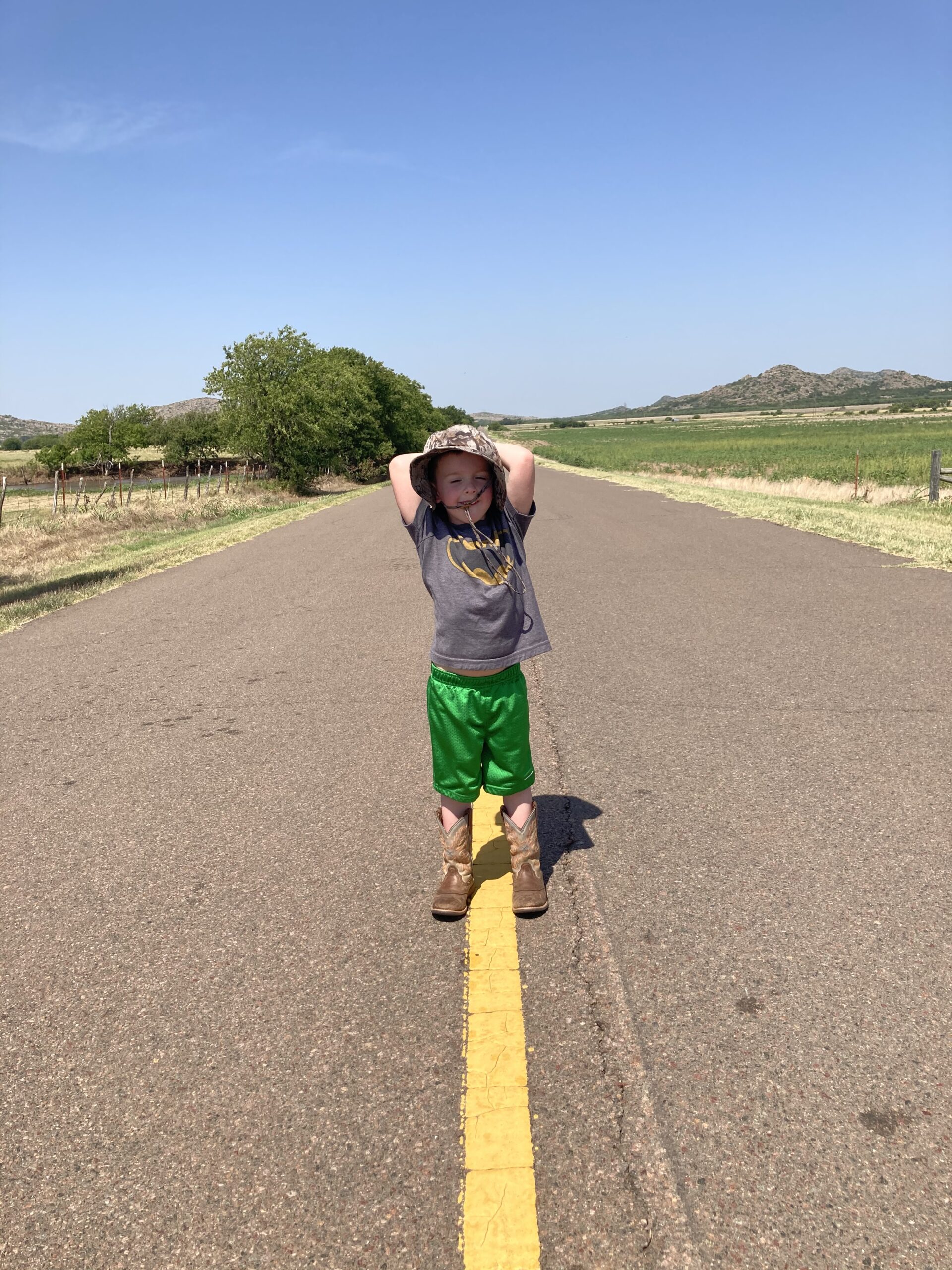
This weekend’s trip was a combination of an errand and adventure. I wanted to go to Cordell to check out Mike’s Meats and More to get some fresh beef to stock up our deep freeze. (That blog post here.) This was the perfect opportunity to find some more historic markers on our way to and from Cordell. Our first stop was at the Gold Belle Mine.
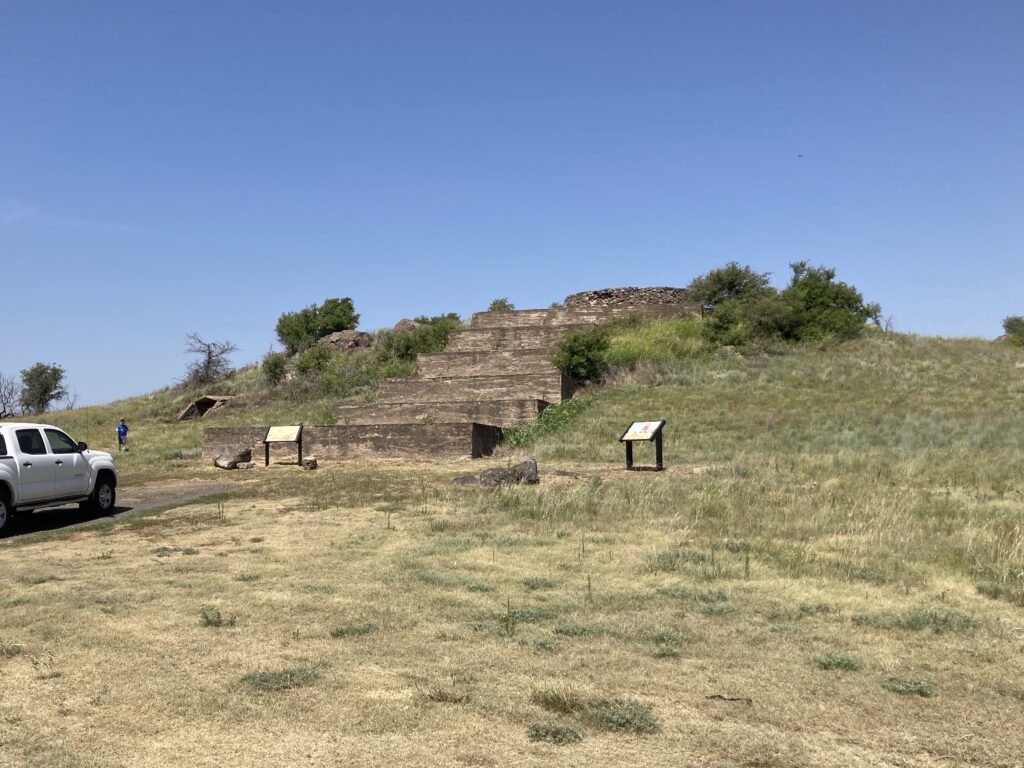
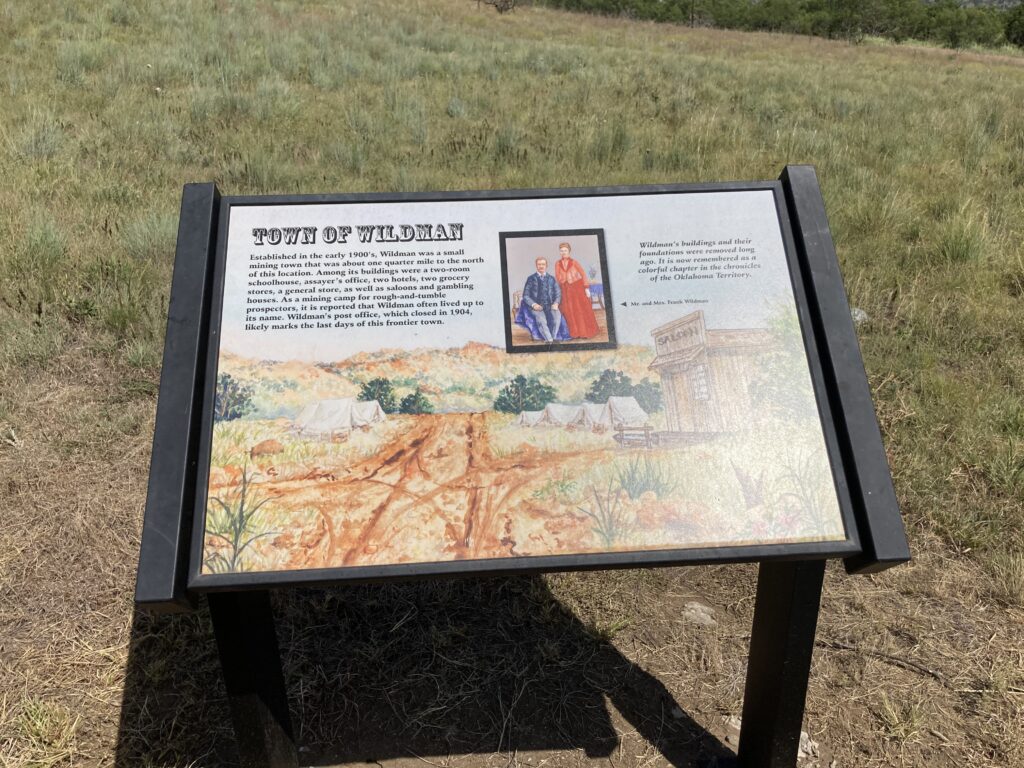
The Gold Belle Mining and Milling Company was formed around 1900 by Wildmand and Williams near the rough mining town of Wildman. The Gold Belle Co. erected a 50 tone cyanide mill to process the gold ore. Today on the cooling tower and concrete foundation remain as evidence of the short-lived gold rush. At the top of the hill is the cooling tower. Below on what is not the steps, there were two large building which housed the mill. The ore was transported to the mill by means of a 1/4 mile overhead tram-way. No ore was ever processed and to get rid of the mine and mill the owners salted the mine. Gold dust was got into the walls of the mine with a muzzle loaded shot gun. Stock was then sold in the mine at the reported price of one dollar per share. It is said that 270,000 shares where sold.
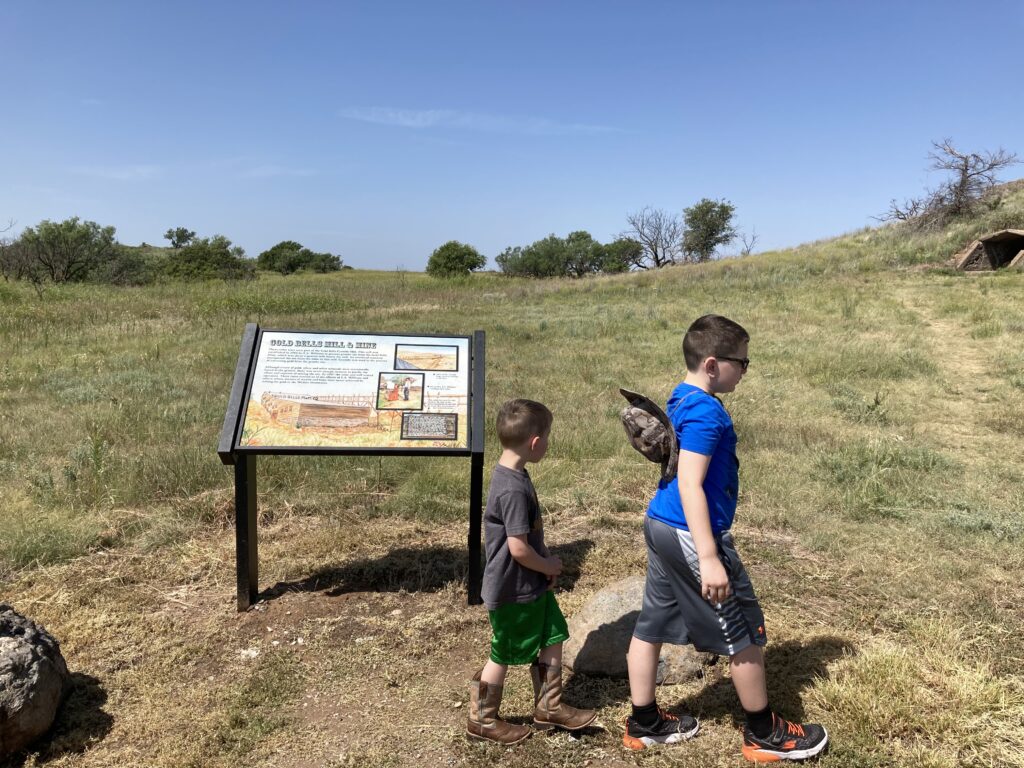
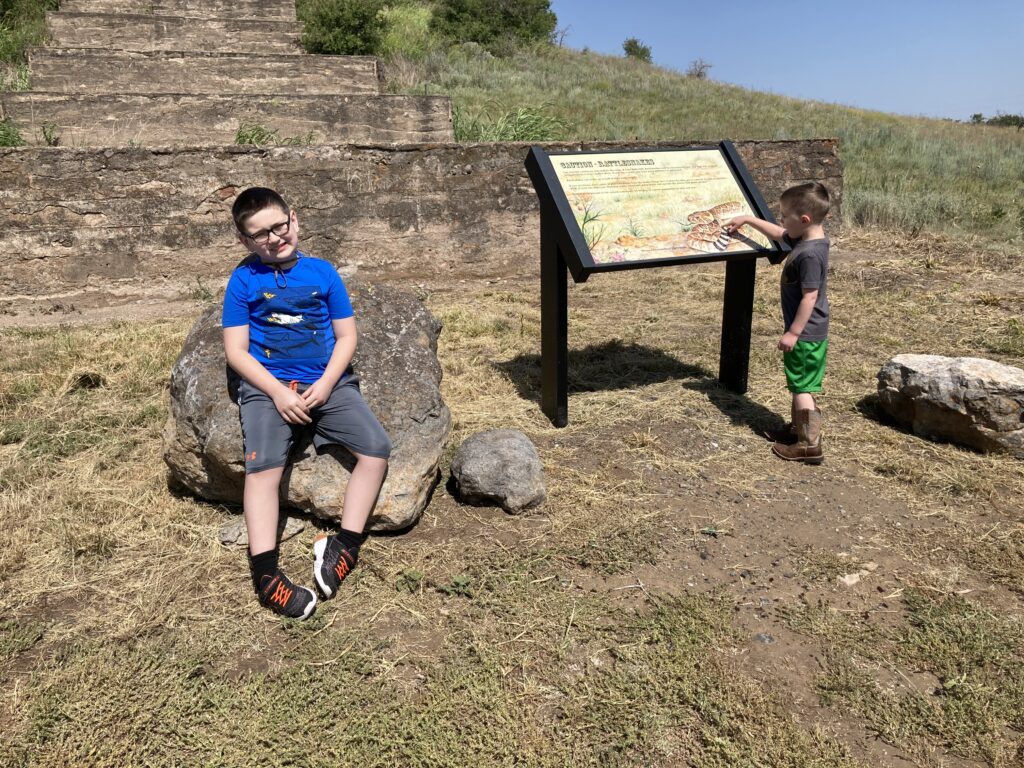
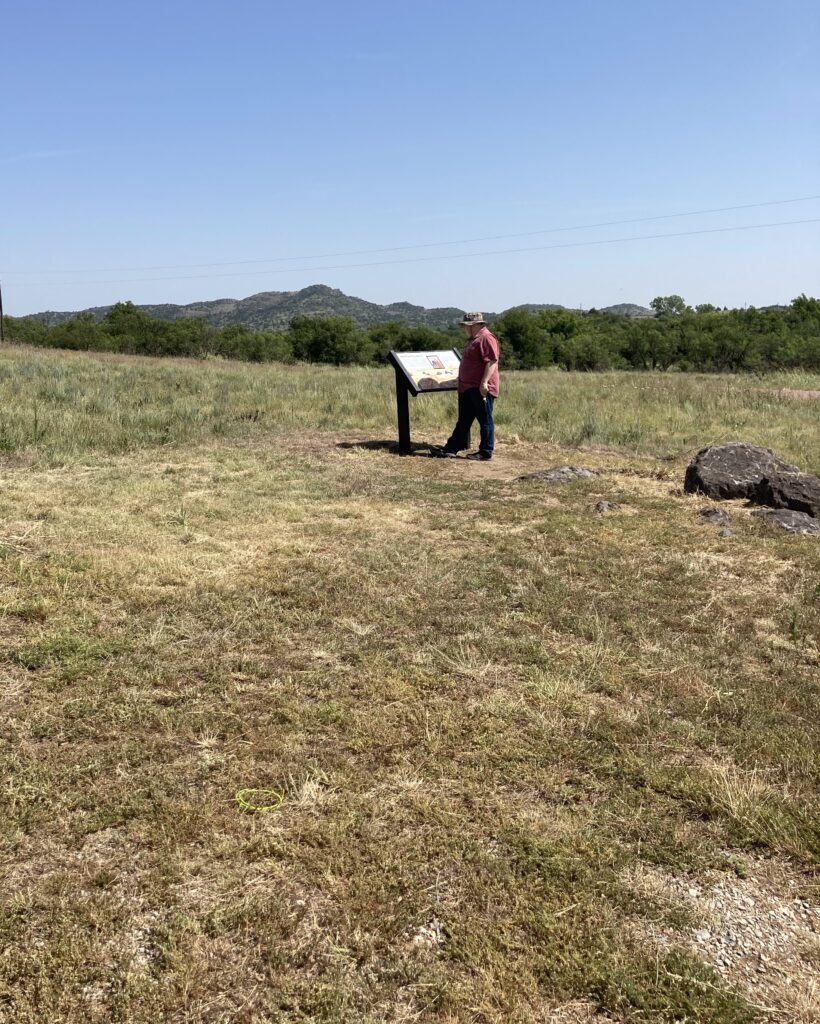
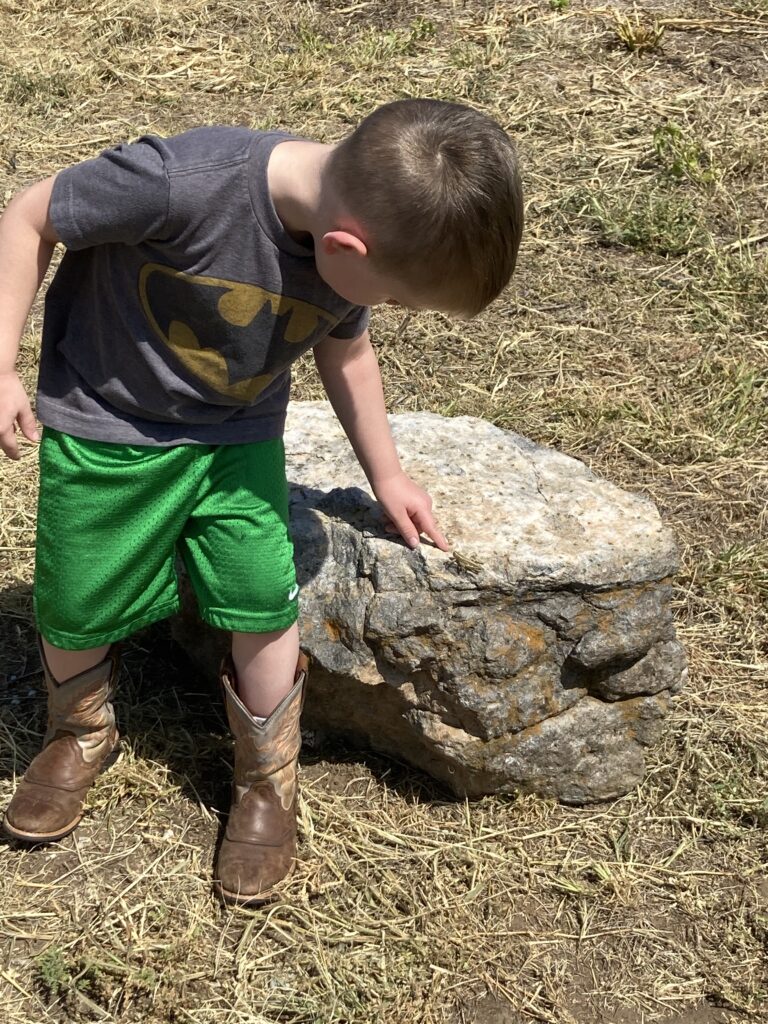
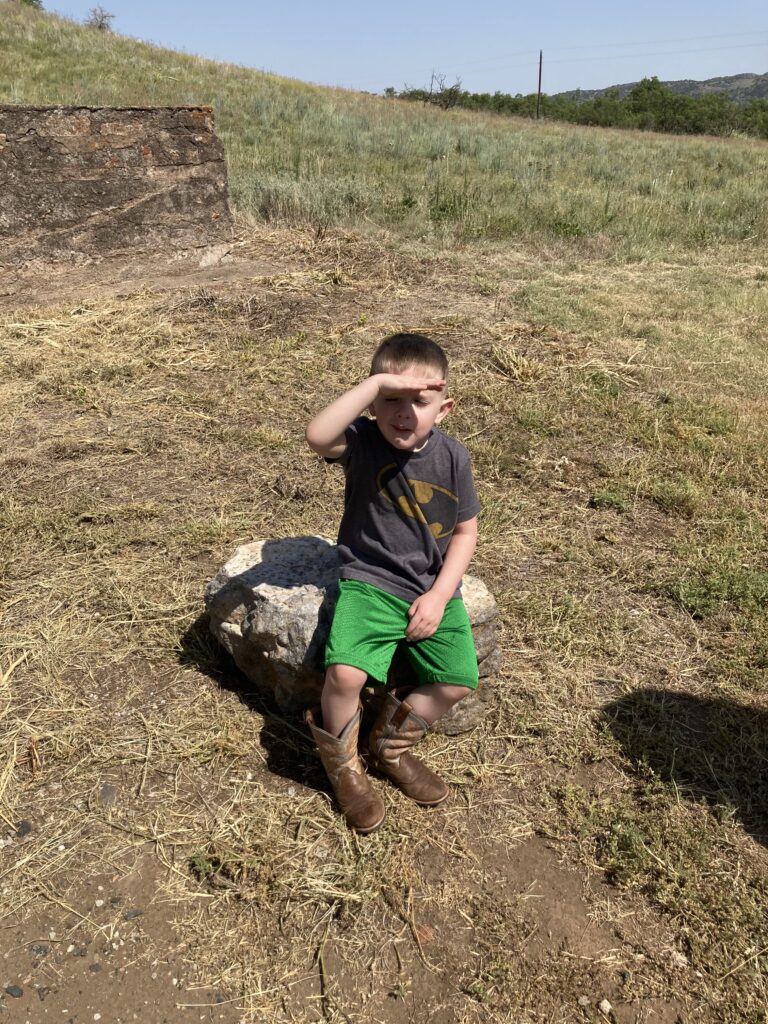
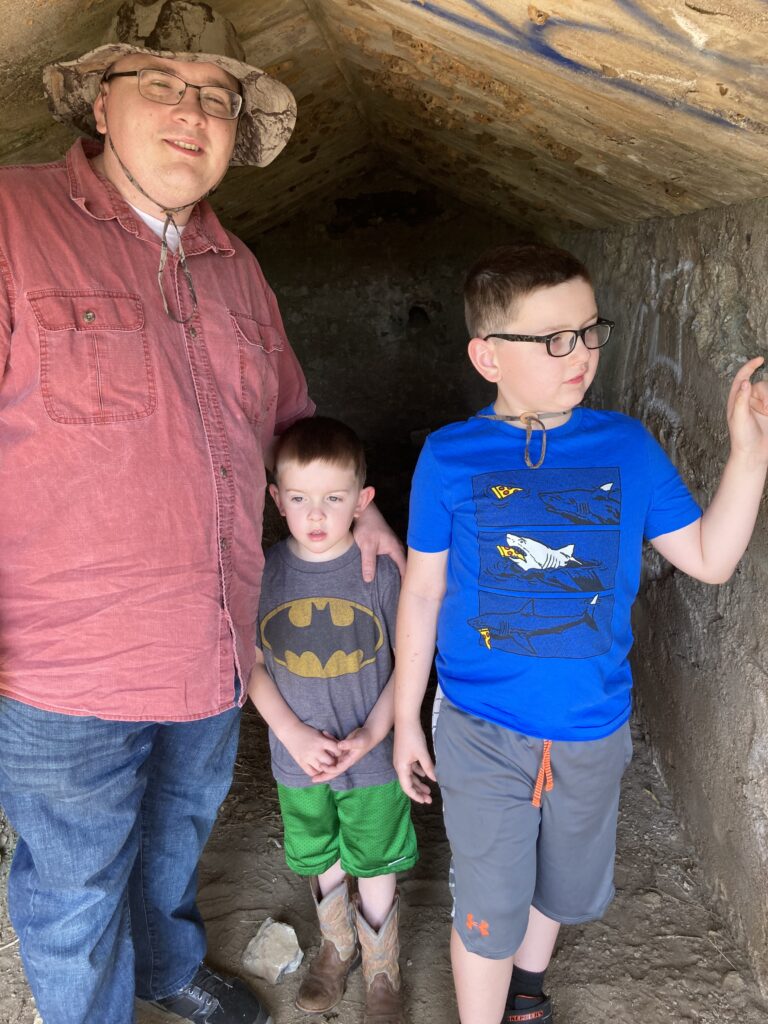
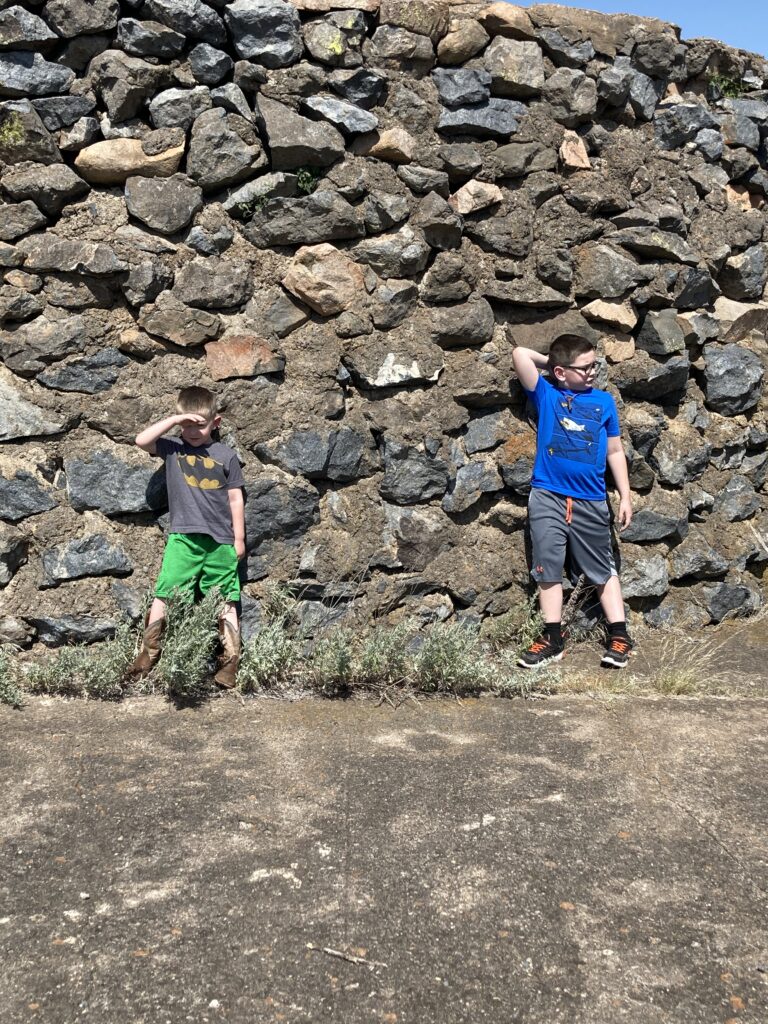

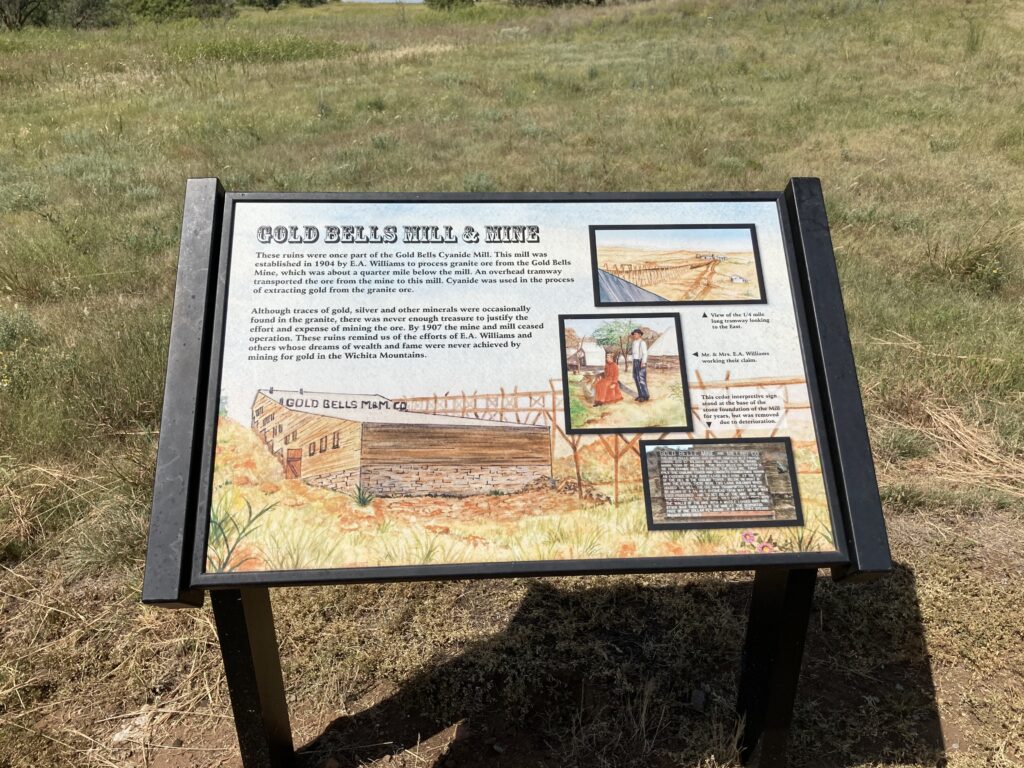
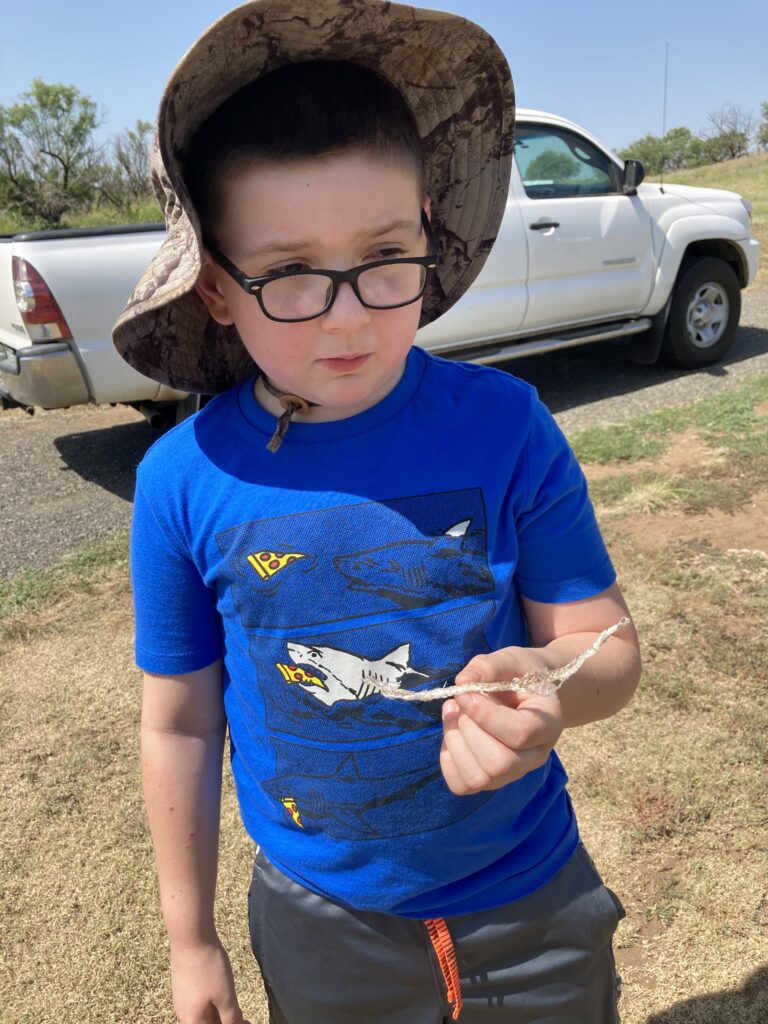
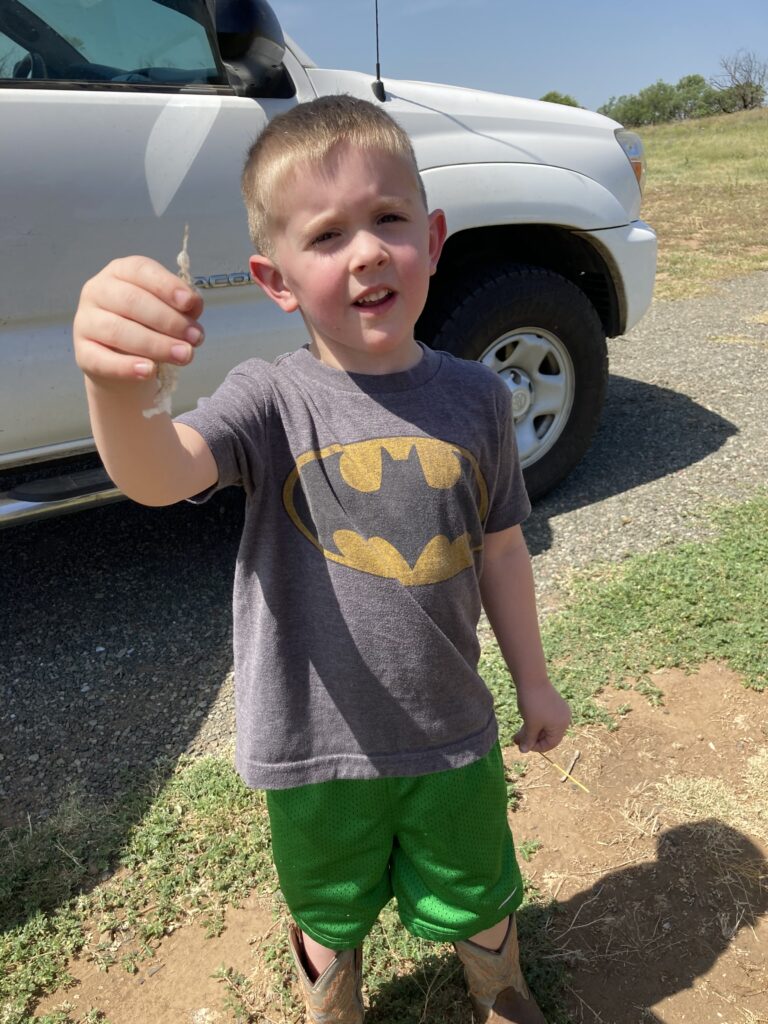
We had to backtrack to our next stop, Camp Radziminski. The sign is off of the road and there is no “historical marker this way” sign to direct us to the marker.
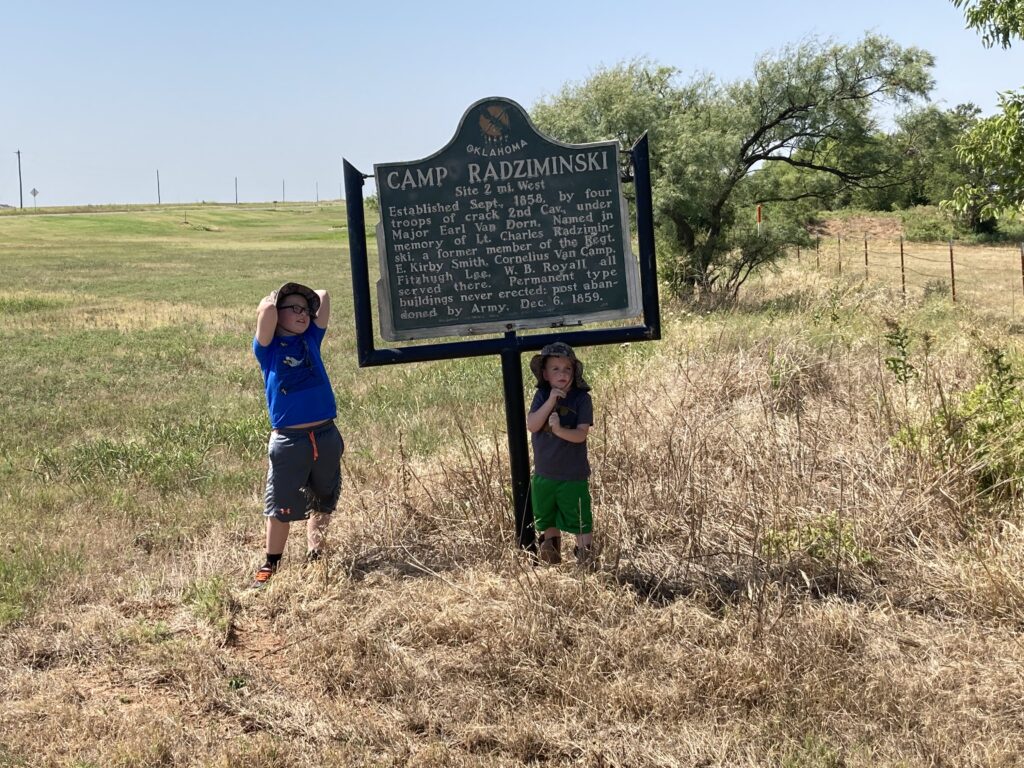
Established Sept. 1858, by four troops of crack 2nd Cav. under Major Earl Van Dorn. Named in memory of Lt. Charles Radzimisnski, a former member of the Regt. E. Kirby Smith. Cornelius Van Camp, Fitzhugh Lee, W. B. Royall all served there. Permanent type buildings never erected; post abandoned by Army, Dec 6, 1859.
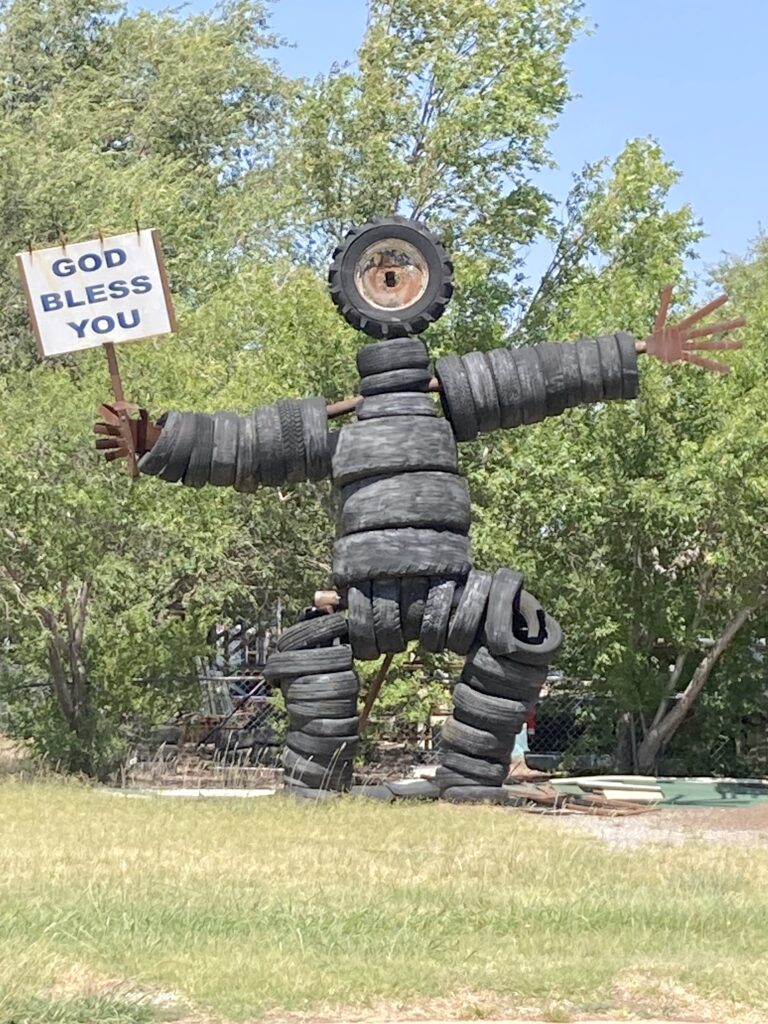
Our next marker was the site of the Babbs/Switch school fire. On Dec. 24, 1924 35 people lost their lives while attending a Christmas party in a one room frame school house. The fire was started by a candle on a Christmas tree. A school building was built here in memorial and a model to point the way to safer county schools the nation over. The school was discontinued in 1943.
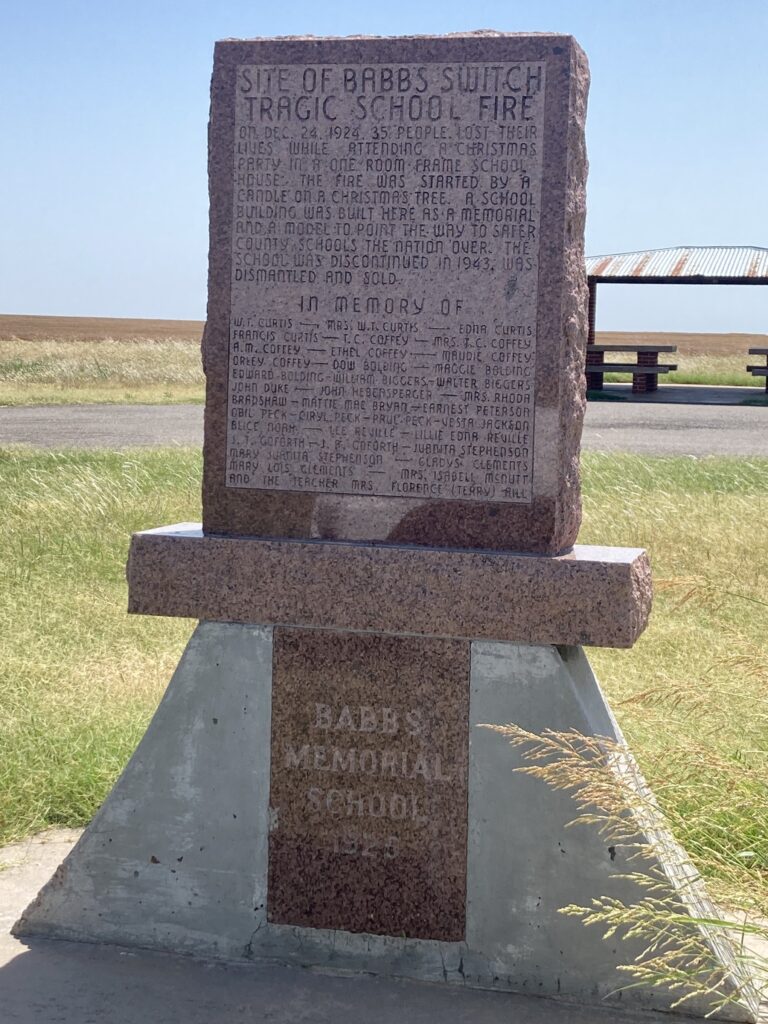
W. T. Curtis, Mrs. W. T, Curtis, Edna Curtis, Francis Curtis, T. C. Coffey, Mrs. T. C. Coffey, Maudie Coffey, Orley Coffey, Dow Bowling, Maggie Bowling, Edward Bowling, William Biggers, Walter Biggers, John Duke, John Hebeasperger,Mrs. Rhoda Bradshaw, Mattie Mae Bryan, Earnest Peterson, Obil Peck, Ciryl Peck, Paul Peck, Vesta Jackson, Alice Noah, Lee Reville, Lillie Edna Reville, J. T. Goforth, J. B. Goforth, Juanita Stephenson, Mary Juanita Stephenson, Gladys Clements, Mary Lois Clements, Miss Isabell McNutt and the teacher Florence (Terry) Hill
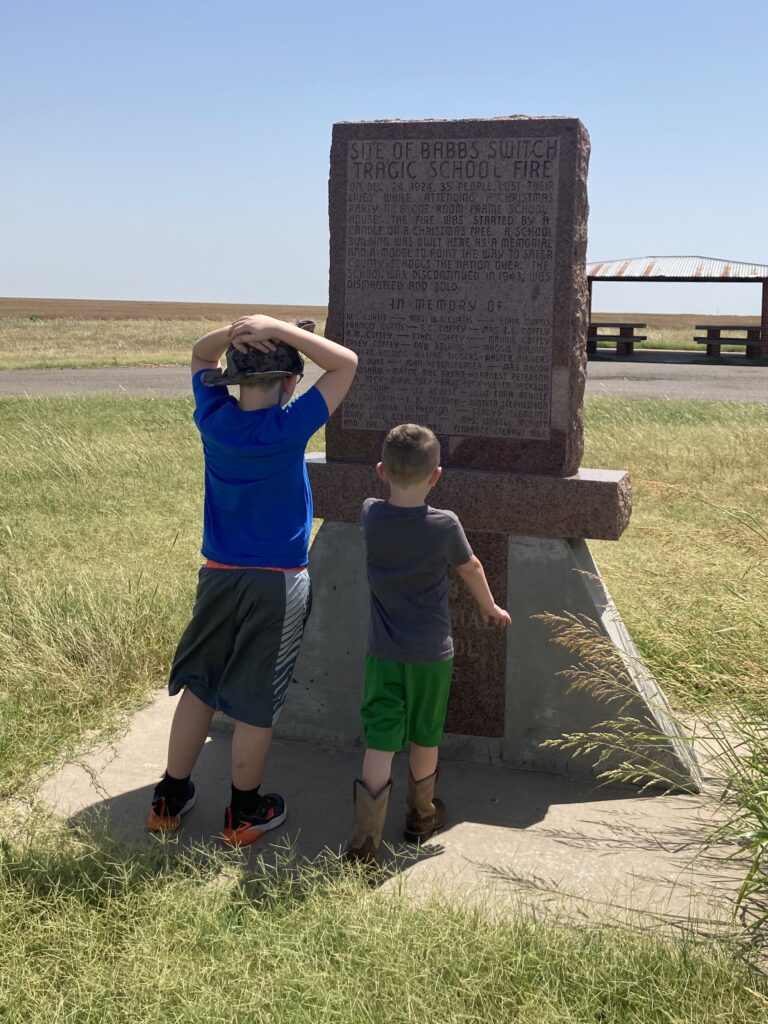
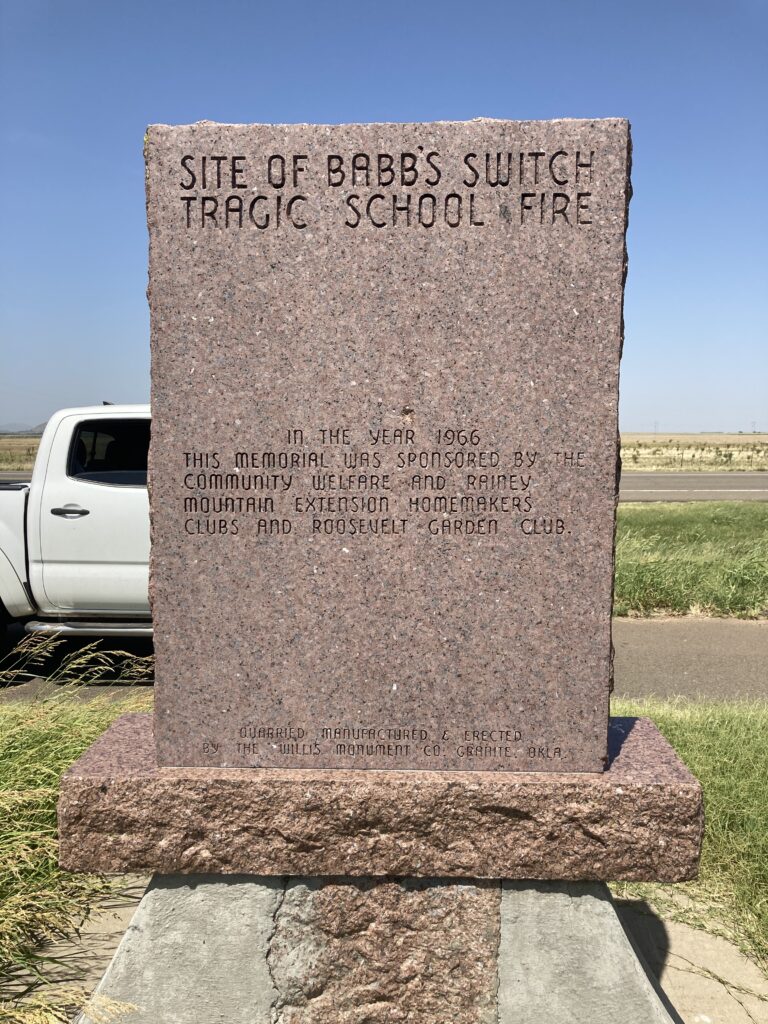
Our next marker came after we made a pit stop in the town of Cordell. Established in 1899, in what was thought to be Washita Co., Mountain View was moved 2 mi. S.W. to Kiowa Co. in 1930 because an error in the original survey placed the first site outside of the legal authority of local officials. XXth Century Club.
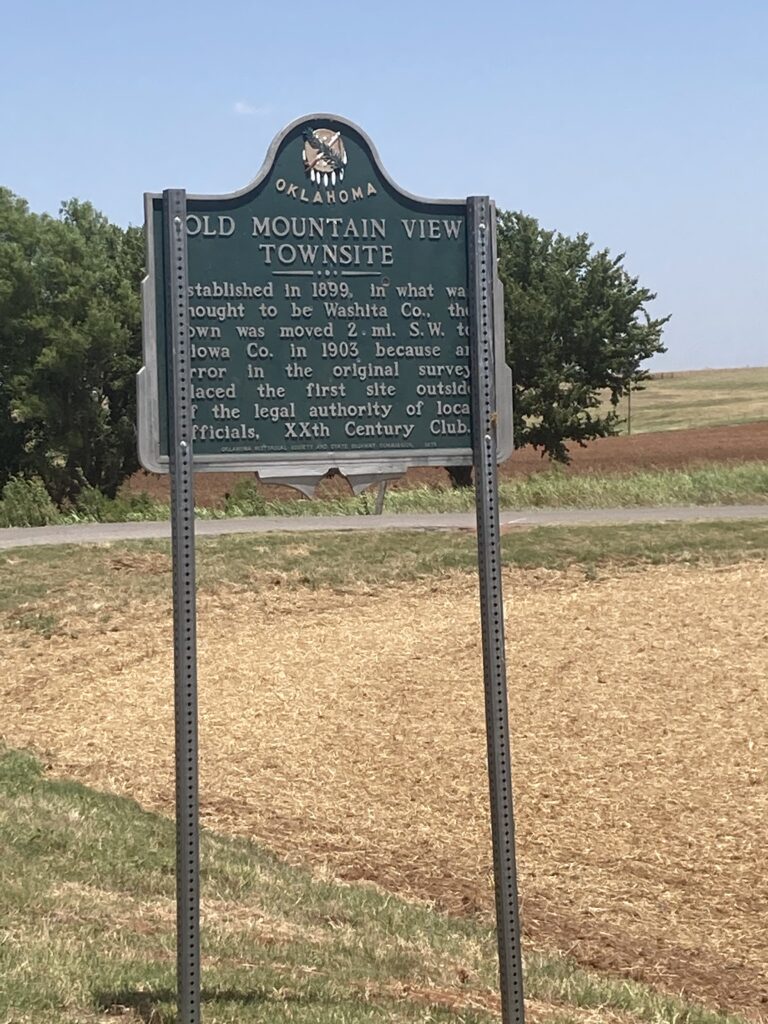
Our next stop was at the Millie Durgan marker. Millie Durgan, White Captive, Kiowa Name: Sain-to-hoodle. Captured at age eighteen months in the Elk Creek Raid. No. Texas, Fall, 1864. Adopted by the Kiowa tribe and married a Kiowa named Goombi. True identity not known until three years before her death in 1934. Millie was buried in the Old Rainy Mt. Cemetery southwest of Mountain View, Oklahoma. We decided to head to the cemetery next to look for Millie’s grave.
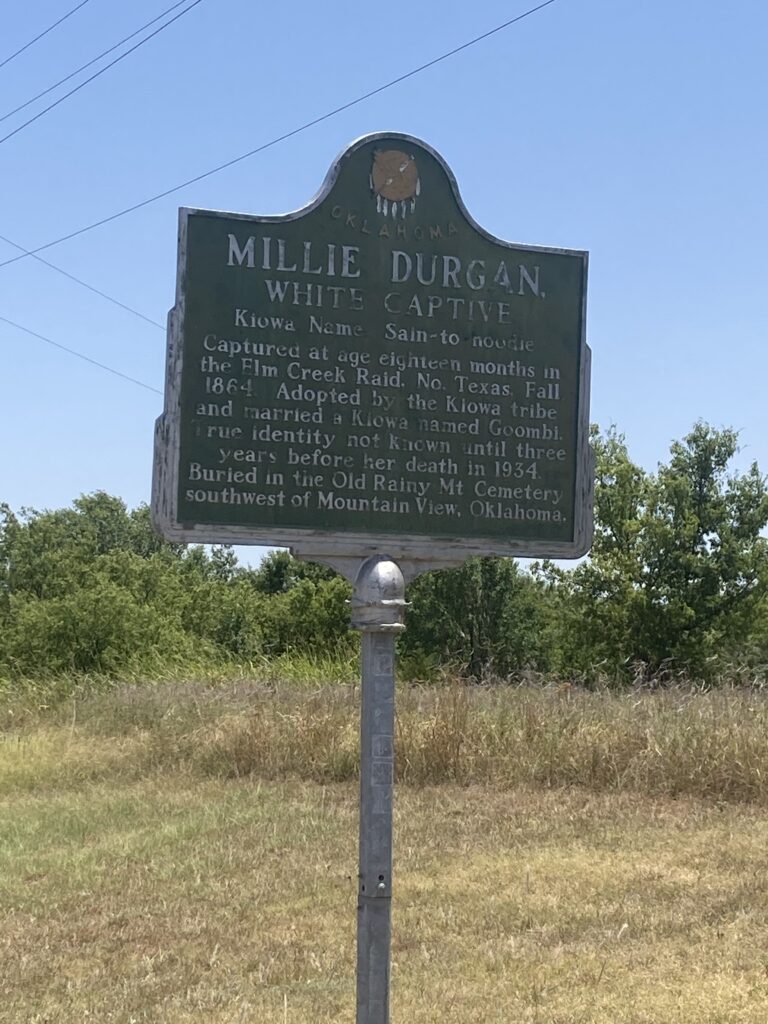
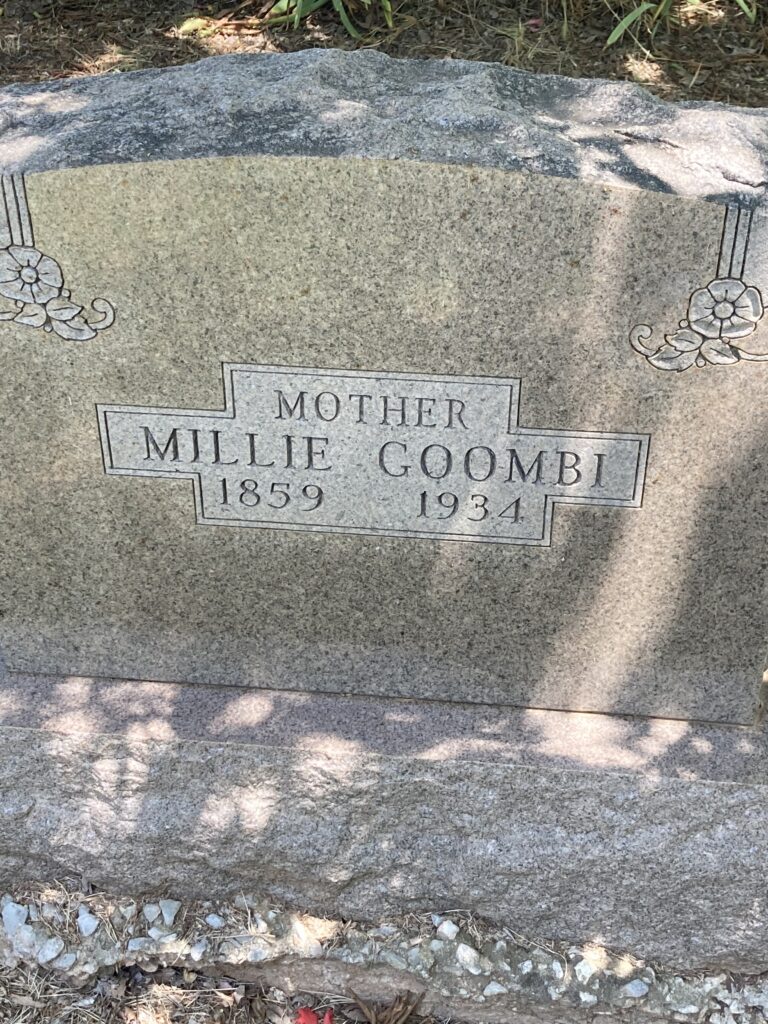
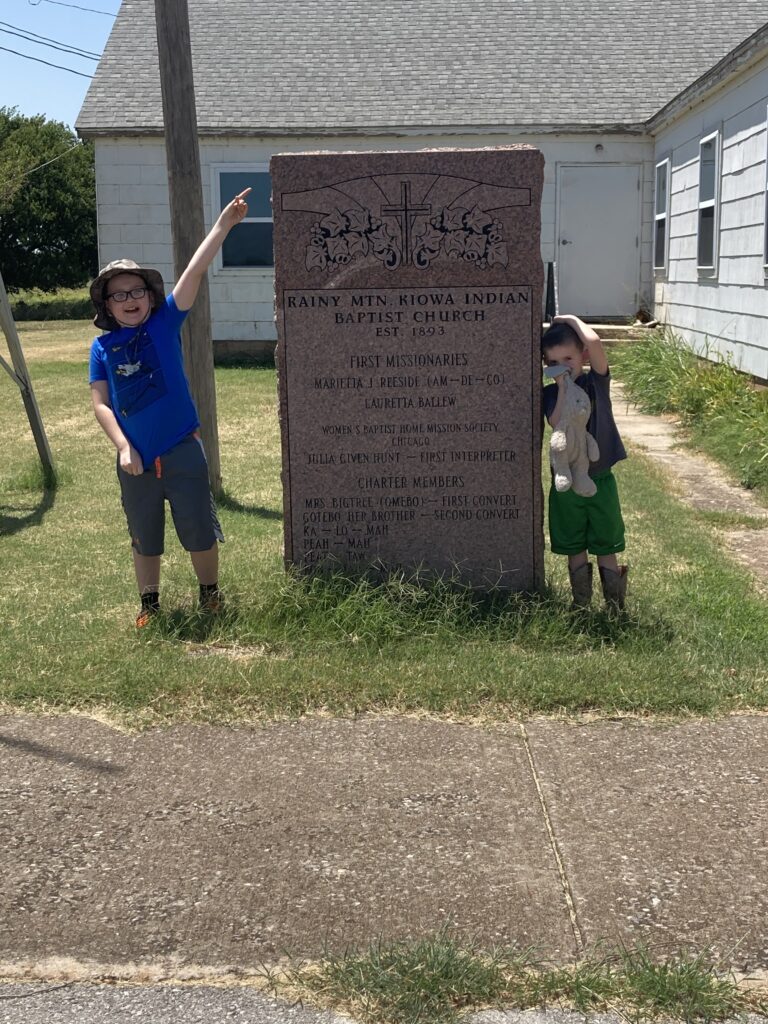
Est. 1893
Located to the South of the cemetery
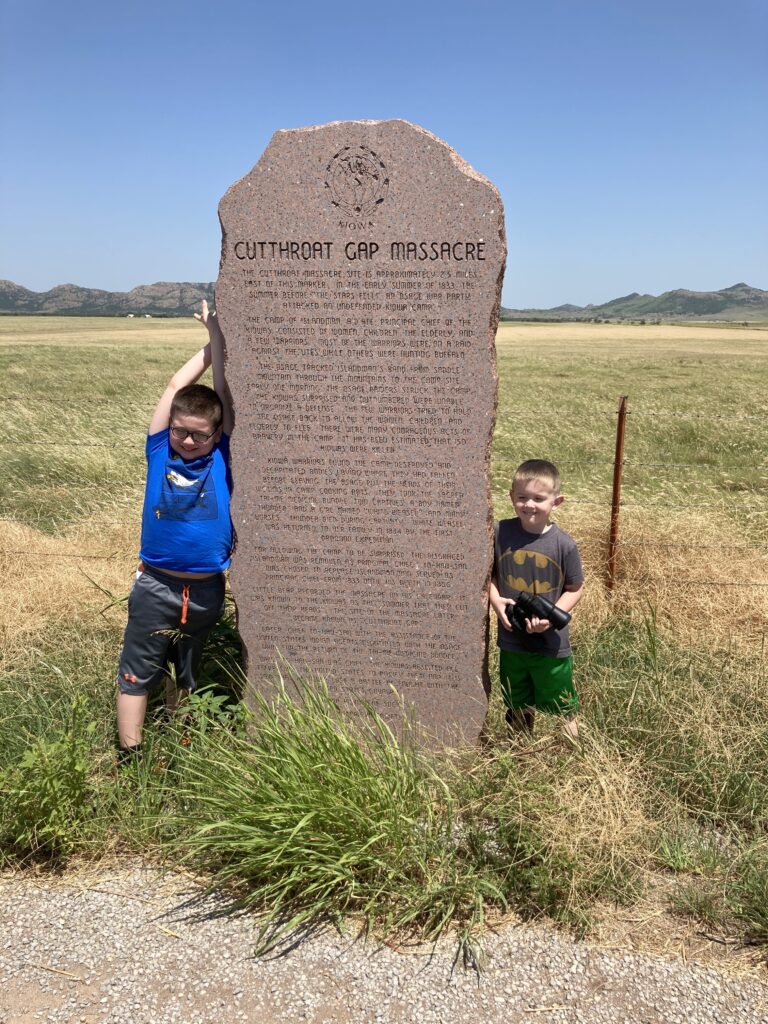
Our next marker was the Cutthroat Massacre. The Cutthroat Massacre site is approximately 2.5 miles east of this marker. In the early summer of 1833 the summer before “The Stars Fell” an Osage war party attacked an undefended Kiowa camp.
The camp of Islandman, a’ d’ ate Principal Chief of the Kiowas, consisted of women, children , the elderly, and a few warriors. Most of the warriors were on a raid against the Utes , while others were hunting buffalo.
The Osage tracked Islandman’s band from Saddle Mountain through the mountains to the camp site early one morning. The Osage raiders struck the camp. The Kiowas surprised and outnumbered were unable to organized a defense. The few warriors tried to hold the Osage back to allow the women and children and elderly to flee. There were many courageous acts of bravery in the camp. It has been estimated that 150 Kiowas were killed.
Kiowa warriors found the camp destroyed and decapitated bodies laying where they had fallen . Before leaving the Osage put the heads of there victims in camp cooking pots. They took the sacred Tai-me Medicine Bundle, two captives, a boy named “Thunder” and a girl named “White Weasel” and many horses. Thunder died during captivity. White Weasel was returned to her family in 1834 by the First Dragoon Expedition.
For allowing the camp to be surprised, the disgraced Islandman was removed as Principal Chief To-hau-san was chosen to replace Islandman and served as principal chief from 1833 until his death in 1866.
Little Bear recorded the massacre on his calendar. It was known to the Kiowas as “the summer that they cut off their heads”. The site of the massacre later became known as “Cutthroat Gap”
Later Chief To-hau-san with the assistance of United States Indian agents negotiated with the Osage tribe for the return of the Tai-me Medicine Bundle.
While To-hau-san was chief the Kiowas resisted all efforts by the United States to pacify them and it is said that he never lost a battle he fought with the United States Cavalry.
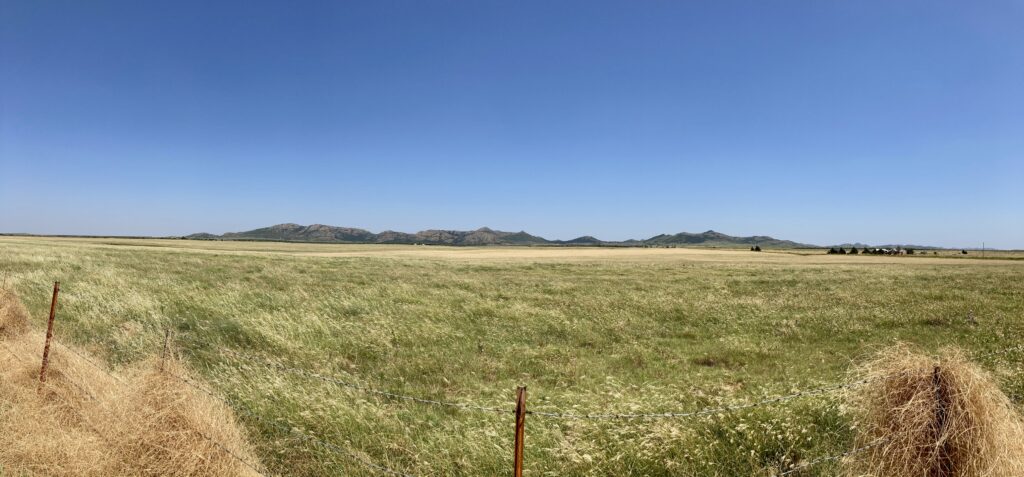
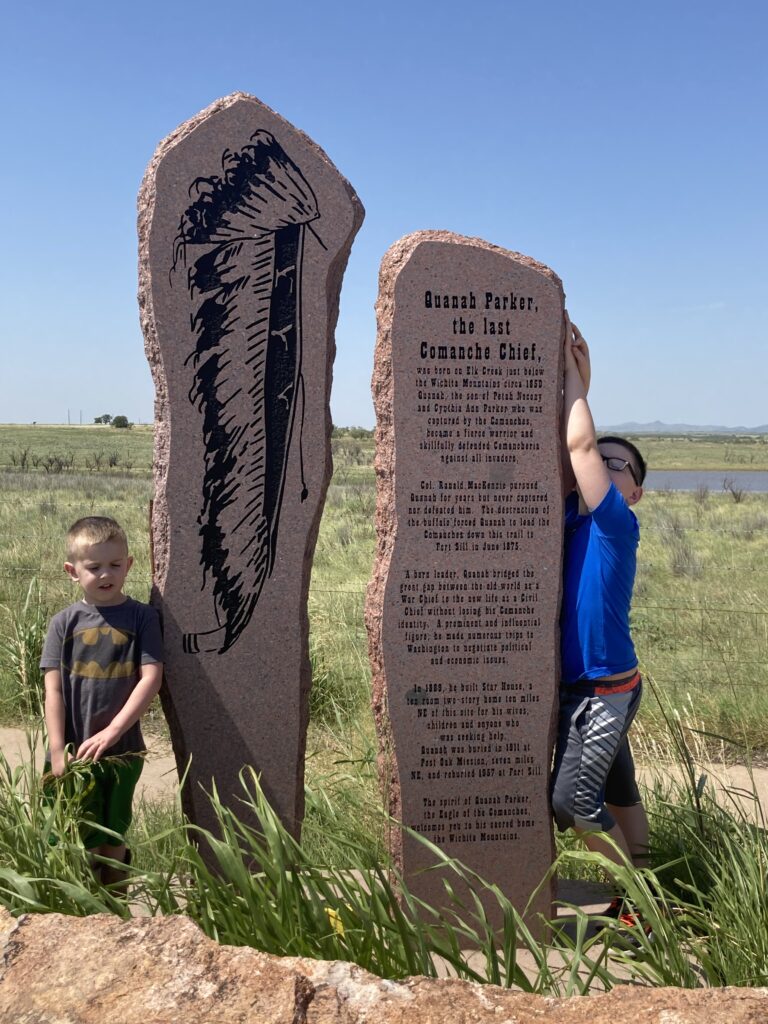
Our last stop was at the Quanah Parker memorial marker. Quanah Parker the last of the Comanche chief was born in Elk Creek just below the Wichita mountains circa 1850. Quanah, the son of Pitih Norony and Cynitha Ann Parker who was captured by the Comanches, became a fierce warrior and skillfully defended Comancheria against all invaders. The destruction of the buffalo forced Quanah to lead the Comanche down this trail to Fort Sill in June 1878. A born leader Quanah bridged the great gap between the old world as a War Chief to the new life as a Civil Chief without losing his Comanche identity. A prominent and influential figure he made numerous politic and economic issues. (Quanah) In 1889 he built Star House a ten room two story house ten mile NE of this sight for his wifes, children and anyone who was seeking help. Quanah was buried in 1911 at Post Oak Mission seven miles NE and reburied 1957 in Fort Sill. The spirit of Quanah Parker the Eagle of the Comanches welcomes you to his scared home the Wichita Mountains.


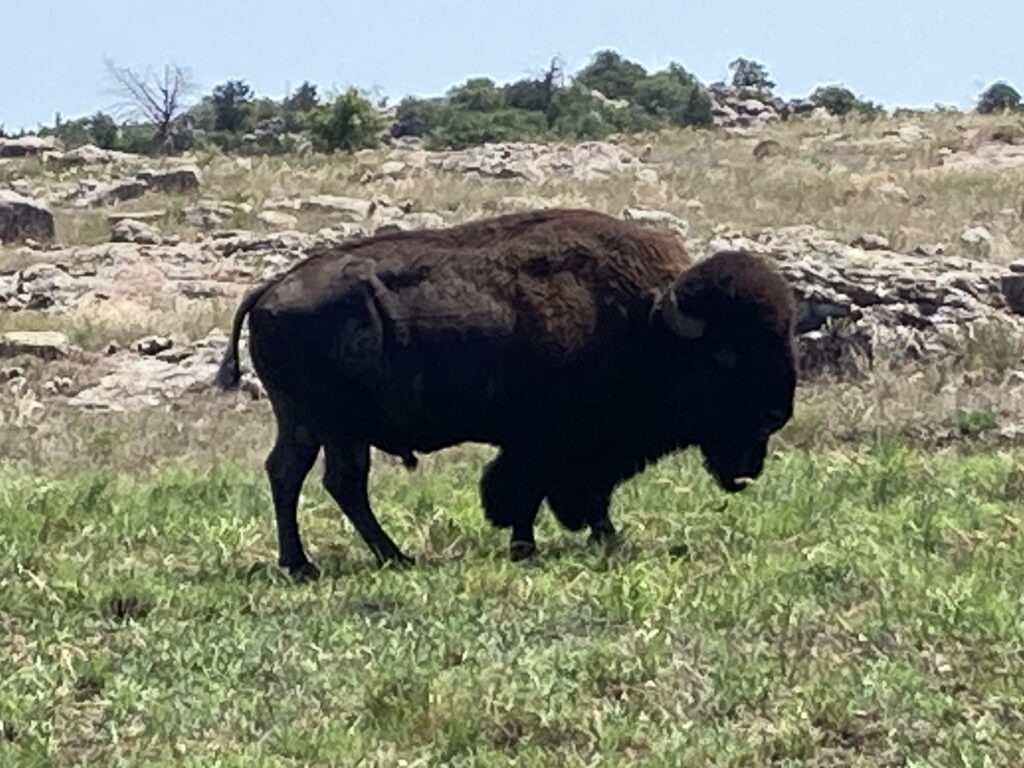
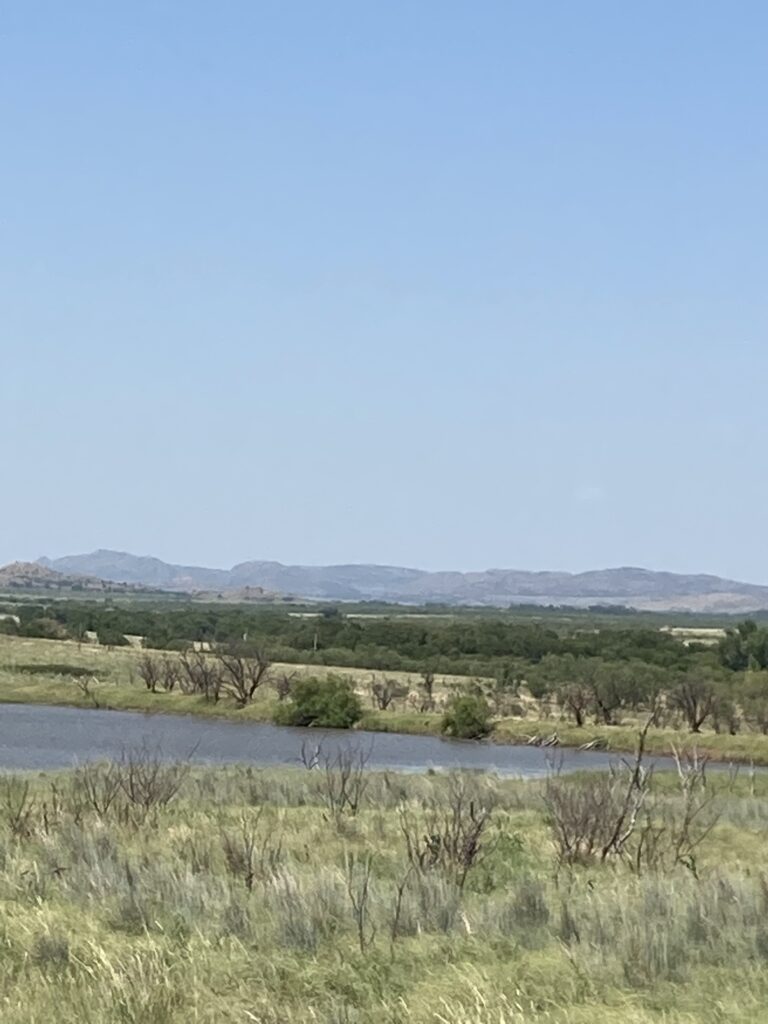
This concludes our adventure through Kiowa County. This trip had a lot of interesting locations to check out. What will we find on our next adventure through Oklahoma history?